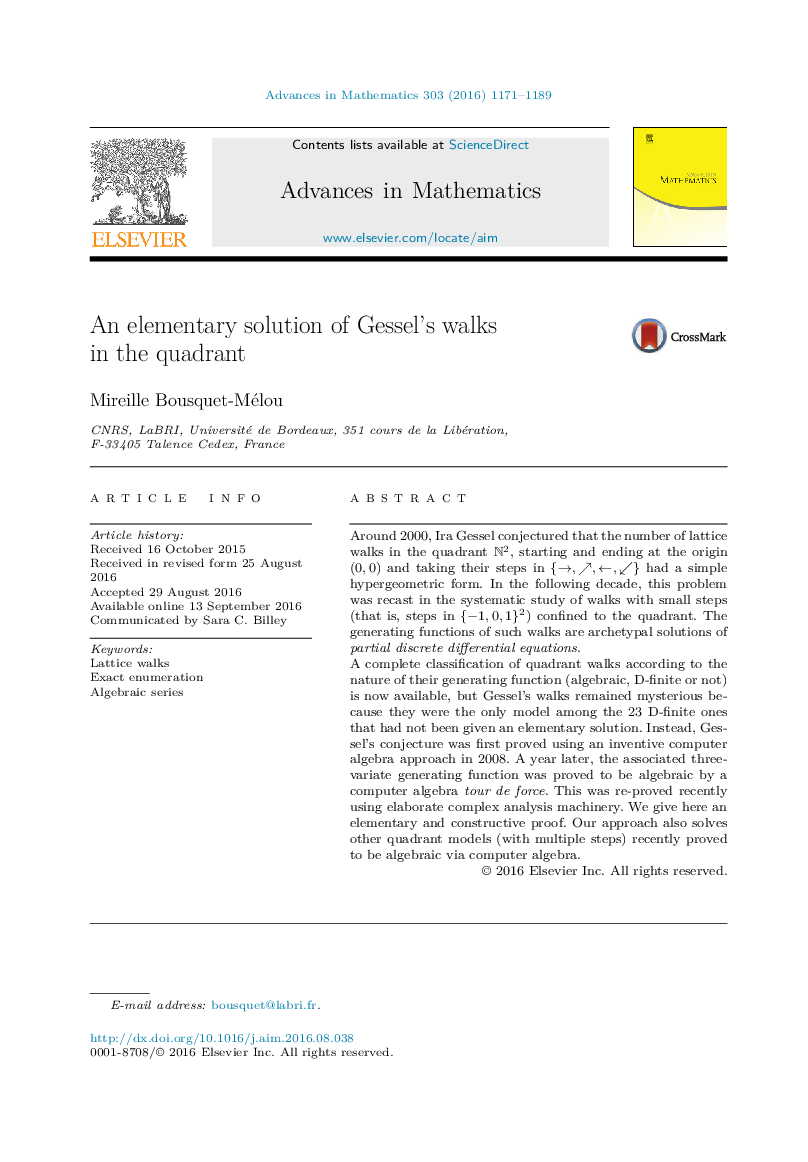| Article ID | Journal | Published Year | Pages | File Type |
|---|---|---|---|---|
| 6425026 | Advances in Mathematics | 2016 | 19 Pages |
Around 2000, Ira Gessel conjectured that the number of lattice walks in the quadrant N2, starting and ending at the origin (0,0) and taking their steps in {â,â,â,â} had a simple hypergeometric form. In the following decade, this problem was recast in the systematic study of walks with small steps (that is, steps in {â1,0,1}2) confined to the quadrant. The generating functions of such walks are archetypal solutions of partial discrete differential equations.A complete classification of quadrant walks according to the nature of their generating function (algebraic, D-finite or not) is now available, but Gessel's walks remained mysterious because they were the only model among the 23 D-finite ones that had not been given an elementary solution. Instead, Gessel's conjecture was first proved using an inventive computer algebra approach in 2008. A year later, the associated three-variate generating function was proved to be algebraic by a computer algebra tour de force. This was re-proved recently using elaborate complex analysis machinery. We give here an elementary and constructive proof. Our approach also solves other quadrant models (with multiple steps) recently proved to be algebraic via computer algebra.
